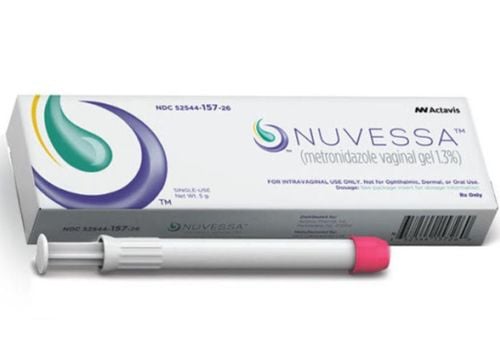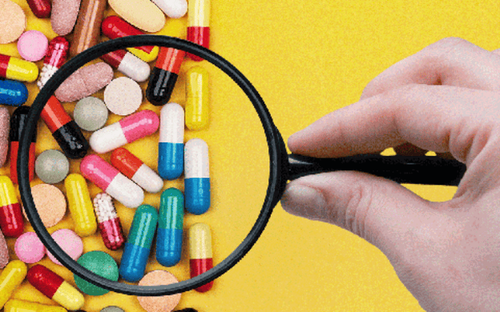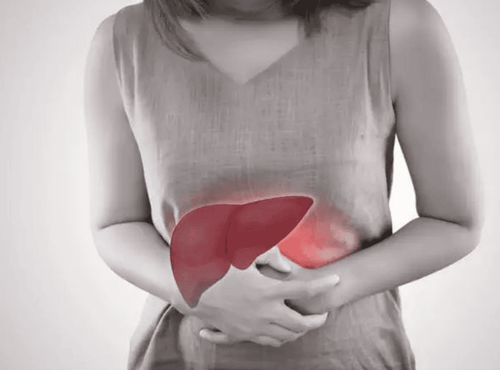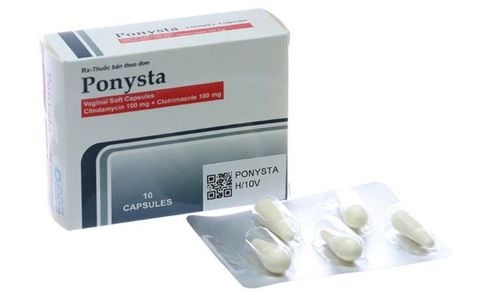This is an automatically translated article.
Cadilinco is a prescription medicine containing the active ingredient Lincomycin, an antibiotic of the Lincosamide family. To use Cadilinco safely and effectively, you should consult a pharmacist or specialist.
1. What are the effects of Cadilinco?
Cadilinco medicine contains Lincomycin ingredient, which is made in capsule form. The main effect of Cadilinco is bacteriostatic, the drug also has a bactericidal effect when used at high concentrations against susceptible strains of bacteria. The antibacterial activity of Lincomycin is similar to that of clindamycin, but the potency is less. The spectrum of action of Lincomycin includes:
Gram-positive bacteria: Cadilinco mainly has a bacteriostatic effect on gram-positive bacteria such as Staphylococcus (staphylococcus), Streptococcus (streptococcal), Pneumococcus (pneumococcal), Bacillus anthracis (St. anthrax), Corynebacterium diphtheriae (diphtheria). However, Lincomycin has no effect on Enterococcus. Anaerobic Bacteria: Lincomycin has a broad spectrum of activity against anaerobic bacteria. The gram-positive anaerobes sensitive to Lincomycin include: Eubacterium, Propionibacterium, Peptostreptococcus, Peptococcus, Clostridium perfringens and Clostridium tetani. High doses of lincomycin are also active against gram-negative anaerobes such as Bacteroides spp. Protozoa: Lincomycin is also active against some protozoa, the drug has been tried to treat Pneumocystis carinii pneumonia or Toxoplasma infection.
2. Pharmacokinetics of the drug Cadilinco
Absorption: Cadilinco is used orally. Food greatly reduces the extent and rate of absorption of Lincomycin, so Cadilinco should be taken away from meals. With a dose of 500mg Lincomycin taken orally, about 20-30% of the drug is absorbed from the gastrointestinal tract. Peak plasma concentrations of the drug are about 2-7 micrograms/ml after about 2-4 hours of dosing. Distribution: The percentage of drug bound to plasma proteins is up to 90%. Lincomycin is distributed into tissues and body fluids, including bone. The drug does not enter the cerebrospinal fluid, but if the meninges are inflamed, the distribution of the drug into the cerebrospinal fluid is better. Lincomycin crosses the placenta, the drug can be found in breast milk at concentrations of 0.5 - 2.4 micrograms/ml of breast milk. The half-life of the drug is about 5 hours. Metabolism: Lincomycin is metabolised in the liver. Elimination: The drug is eliminated from the body mainly in the feces, the rest is excreted in the urine as metabolites and unchanged form.
3. Indications of the drug Cadilinco
The use of antibiotic Cadilinco requires a prescription from a doctor. The drug is indicated for the treatment of severe infections caused by bacteria sensitive to the drug, especially staphylococci, streptococci, and pneumococci encountered in diseases such as:
Ear, nose and throat infections; Bronchitis , pneumonia or lung abscess; Abdominal infection, secondary peritonitis, liver abscess; Vaginal infections , pelvic inflammatory disease - uterus; Oral and skin infections, complicated boils, ulcers caused by anaerobic infections; Bone and joint infections, acute and chronic osteomyelitis; Sepsis; Infections caused by bacteria resistant to Penicillin ; Other infections caused by Bacteroides spp.
4. Dosage of the drug Cadilinco
Should take Cadilinco (Lincomycin 500mg) far from meals, can take it 1 hour before meals or 2 hours after meals. Dosage of the drug is as follows:
Adults: Lincomycin 500mg x 3 tablets/day divided into 3 times (1.5g/day). If the disease is very severe, may consider taking 2 tablets / time x 3 times / day. People with severe renal impairment: Lincomycin use should be reduced by 25 - 30% compared to the normal dose.
5. Contraindications to using Cadilinco
Cadilinco is contraindicated for the following subjects:
People with hypersensitivity to Lincomycin, Clindamycin or hypersensitivity to other drugs in the same family as Lincomycin; People who are hypersensitive to any of the other ingredients of Cadilinco; Patients with asthma, meningitis ; Pregnant; Breastfeeding women; Infant; Infection with Candida albicans fungus.
6. Side effects of the drug Cadilinco
Common side effects when taking Lincomycin (ADR > 1/100) are gastrointestinal symptoms such as diarrhea, nausea, vomiting.
Less common side effects (1/1000 < ADR < 1/100) include:
Skin: Urticaria, rash; Blood: Neutropenia ; Digestive: Esophagitis, pseudomembranous colitis; Liver: Increased transaminases. In addition, patients receiving Lincomycin may develop anaphylaxis, but rarely (ADR < 1/1000).
7. Cadilinco drug interactions
The safety of the combination of Lincomycin and Gentamicin has not been fully evaluated, although Lincomycin does not affect the pharmacokinetics of Gentamicin. Diarrhea drugs containing Kaolin reduce the absorption of Lincomycin in the intestine, so Lincomycin should be taken 2 hours after taking kaolin. Food containing sodium cyclamate strongly reduces the absorption of Lincomycin. Using oral contraceptives while taking Lincomycin can reduce or inhibit the effect of oral contraceptives due to intestinal dysbacteriosis and blocking the enterohepatic cycle. Caution should be exercised when lincomycin is combined with neuromuscular blocking agents because lincomycin has similar properties. It is best not to combine Lincomycin and Erythromycin because they have an antagonistic effect in vitro.
8. Precautions while using Cadilinco
Patients with liver failure, kidney failure should pay attention to use and adjust the appropriate dose. Patients taking Cadilinco for a long time should be monitored for blood counts as well as liver and kidney function.
Other subjects that need to be cautious when using Lincomycin are:
Patients with gastrointestinal diseases, especially those with a history of colitis, the elderly and women prone to severe diarrhea or pseudomembranous colitis . The patient has a history of asthma, a history of allergies. When combining Lincomycin with neuromuscular blocking agents. The basic information about Cadilinco in the above article is for reference only. Because Cadilinco is a prescription drug, patients should not use it on their own, but need to contact a doctor/pharmacist directly to get an appropriate prescription and ensure safety for health.













